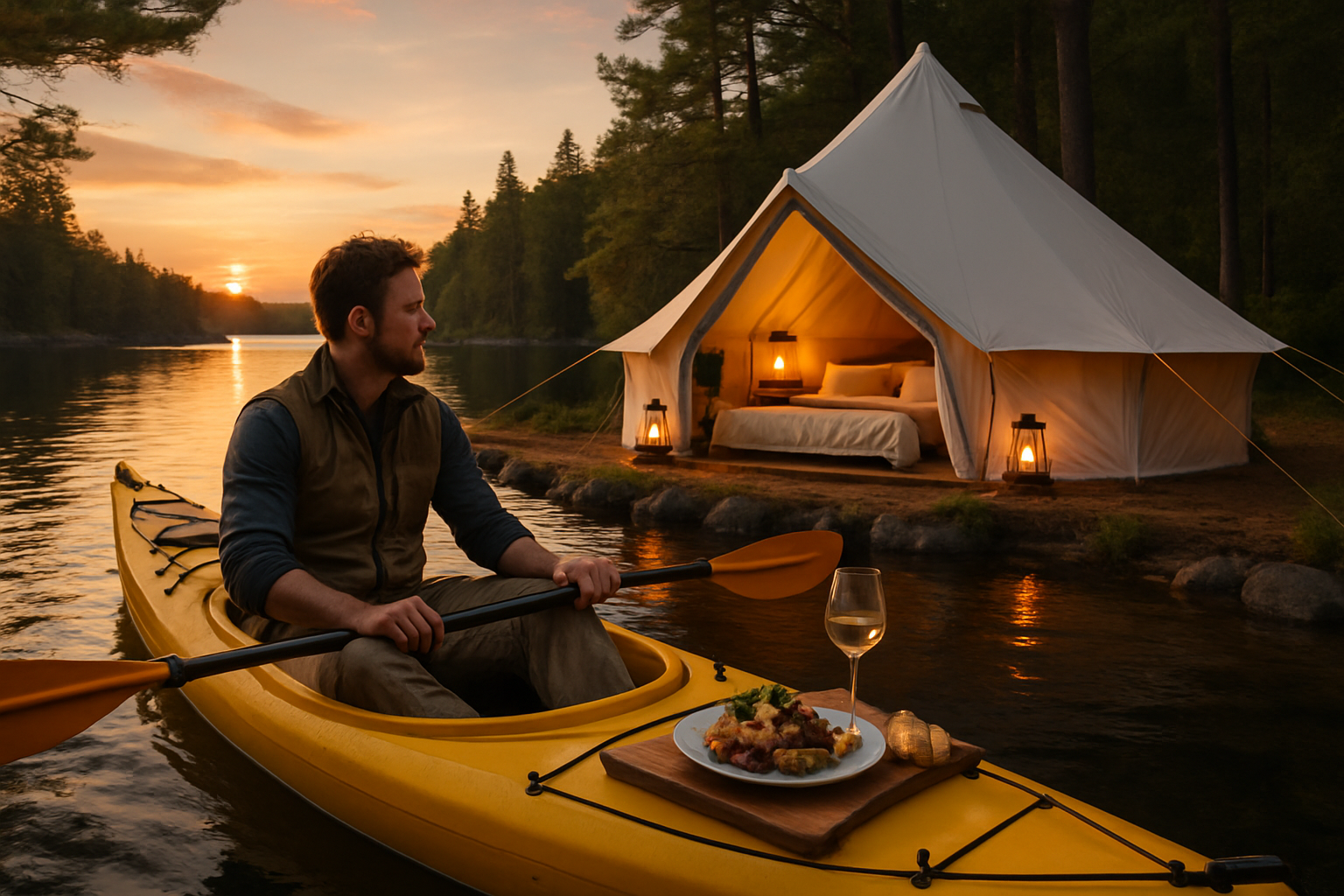Kayak Camping: The Ultimate Fusion of Paddling and Wild Camping
Embark on a journey where the gentle lapping of waves meets the crackling of a campfire. Kayak camping, an exhilarating blend of water exploration and wilderness immersion, is rapidly gaining traction among adventure enthusiasts. This unique travel style offers a fresh perspective on outdoor experiences, allowing travelers to access remote shorelines and pristine campsites unreachable by traditional means. As we delve into the world of kayak camping, prepare to discover a travel trend that's redefining how we connect with nature and challenging the boundaries of conventional outdoor pursuits.

The rise of lightweight, durable materials and innovative kayak designs has made this form of travel more accessible than ever before. Today’s kayak campers benefit from advancements in waterproof gear storage, compact camping equipment, and kayaks specifically designed for extended trips. This evolution has opened up new possibilities for exploration, allowing adventurers to venture further and stay longer in remote locations.
Why Kayak Camping is Gaining Popularity
The appeal of kayak camping lies in its unique ability to offer a multifaceted outdoor experience. Unlike traditional camping or kayaking alone, this hybrid activity provides a perfect balance of physical challenge and tranquil escape. Paddlers can cover significant distances during the day, exploring coastlines, rivers, or lakes, and then set up camp in secluded spots accessible only by water.
This form of travel also aligns with the growing desire for more immersive, low-impact outdoor experiences. Kayak camping allows travelers to minimize their environmental footprint while maximizing their connection with nature. The slower pace and self-sufficiency required foster a deeper appreciation for the surrounding ecosystem and often lead to more meaningful encounters with wildlife.
Planning Your Kayak Camping Adventure
Embarking on a kayak camping trip requires careful planning and preparation. The first step is choosing the right kayak. Touring kayaks or sea kayaks are typically best suited for extended trips, offering ample storage space and stability. Next, consider your route and destination. Factors such as weather patterns, water conditions, and camping regulations should all play a role in your decision-making process.
Gear selection is crucial for a successful kayak camping expedition. Opt for lightweight, compact equipment that can withstand wet conditions. Essentials include a waterproof tent, sleeping bag, cooking equipment, and navigation tools. Don’t forget to pack safety gear such as a life jacket, first aid kit, and communication devices.
Meal planning for kayak camping trips requires a balance between nutrition, weight, and ease of preparation. Many experienced kayak campers opt for a combination of dehydrated meals, energy bars, and fresh foods that can withstand the journey without refrigeration.
Mastering Kayak Camping Techniques
Successful kayak camping hinges on mastering a set of specialized skills. Efficient paddling techniques are essential for covering distances while conserving energy. Learning proper kayak packing methods ensures your gear stays dry and your kayak remains balanced. Practice loading and unloading your kayak on land before your trip to streamline the process when you’re on the water.
Navigation skills are paramount, as kayak campers often venture into areas with limited landmarks. Familiarize yourself with reading nautical charts, using a compass, and understanding tides and currents. Many kayak campers also incorporate GPS devices as a backup navigation tool.
Leave No Trace principles are particularly important in kayak camping. These remote areas often have delicate ecosystems, so it’s crucial to minimize your impact. This includes proper waste disposal, respecting wildlife, and leaving campsites as you found them.
Destinations and Routes for Kayak Camping
The world is brimming with exceptional kayak camping destinations. Coastal areas offer opportunities to explore rugged shorelines and secluded beaches. The San Juan Islands in Washington State, for example, provide a network of marine trails perfect for multi-day kayak camping adventures.
For those seeking freshwater experiences, the Boundary Waters Canoe Area Wilderness in Minnesota offers an vast network of interconnected lakes and rivers. In Europe, the Swedish archipelago presents a unique opportunity to island-hop via kayak, camping on uninhabited islets along the way.
Rivers present another exciting option for kayak camping, allowing paddlers to journey through changing landscapes. The Colorado River through the Grand Canyon is a bucket-list trip for many, offering a combination of challenging rapids and awe-inspiring scenery.
Kayak Camping Insights
• Always check local regulations and obtain necessary permits before your trip
• Pack your gear in waterproof dry bags to keep everything safe and dry
• Learn basic kayak rescue techniques before embarking on extended trips
• Consider taking a kayak camping course to hone your skills and learn from experts
• Invest in a good quality kayak seat for comfort during long paddling days
• Use biodegradable soap and set up your kitchen area away from water sources to minimize environmental impact
As the sun sets on our exploration of kayak camping, it’s clear that this innovative travel trend offers a unique pathway to adventure. By combining the tranquility of paddling with the raw beauty of wild camping, kayak camping provides a fresh perspective on outdoor exploration. It challenges us to step outside our comfort zones, hone new skills, and forge a deeper connection with the natural world. Whether you’re drawn to coastal explorations, lake adventures, or river journeys, kayak camping invites you to chart your own course and discover the hidden wonders that await just beyond the shoreline.




